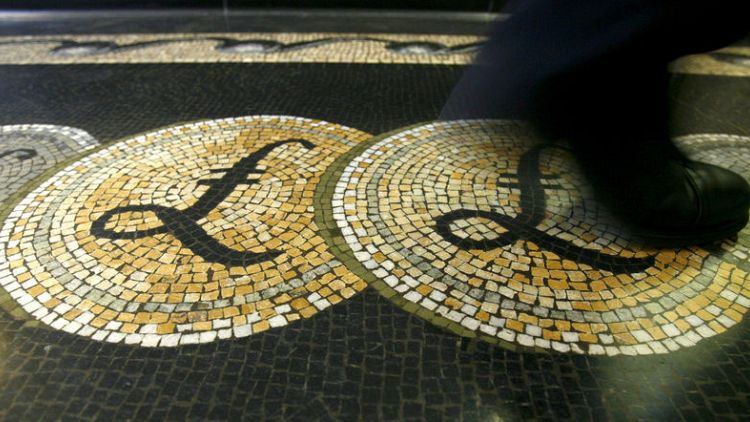By Saikat Chatterjee and Sujata Rao
LONDON (Reuters) - The pound held near four-month lows on Wednesday but with the contest to succeed Prime Minister Theresa May under way and the clock ticking on Brexit, investors are preparing for greater currency swings in coming months.
A gauge of the difference between expected swings in sterling over the next three and the next six months rose to its highest level in more than three years, with implied vol gauges signalling rising anxiety linked to Britain's Oct. 31 deadline to exit the European Union.
May is to step down as Conservative Party leader on June 7 and most candidates to succeed her, including front-runner Boris Johnson, have signalled they are prepared for a no-deal departure if Brussels does not reopen Brexit negotiations.
On the other hand, sterling is being supported by chances of a second Brexit referendum, following pro-EU parties' strong performance in European Parliament elections. The UK parliament also strongly opposes a no-deal outcome.
The currency has lost more than 3% so far in May, its worst month in a year.
Justin Onuekwusi, a fund manager at Legal & General Investment Management, said markets were probably assigning too high a probability to a no deal.
Noting parliament's opposition to that outcome, he said: "If you look at the downside and upside of sterling, the upside risks are reasonably significant. If we see bigger falls in sterling we will take bigger steps to increase our exposure."
Against the euro, the pound was trading at 88.30 pence, not far from a four-month low of 88.50 pence hit last week. It slipped 0.2% against the dollar to around $1.2632, just off four-month lows.
For a graphic on Sterling on roller-coaster since 2016, click https://tmsnrt.rs/2I1WykD
Derivative markets meanwhile indicate increased jitters especially around Oct. 31, with implied volatility contracts expiring after that date trading at a significant premium to those expiring earlier.
For a graphic on options show jitters around Oct 31 Brexit date, click https://tmsnrt.rs/2Wa8Sc9
For a graphic on pound volatility, click https://tmsnrt.rs/2I0SReU
"Lots of sub-plots may emerge along the way but we are moving toward another binary outcome that will likely result in increased pound volatility," MUFG analysts told clients.
British government bonds too reflected the nerves, with 10-year yields at 0.90%, down around 30 basis points in May.
(Reporting by Saikat Chatterjee; Editing by Hugh Lawson and John Stonestreet)



